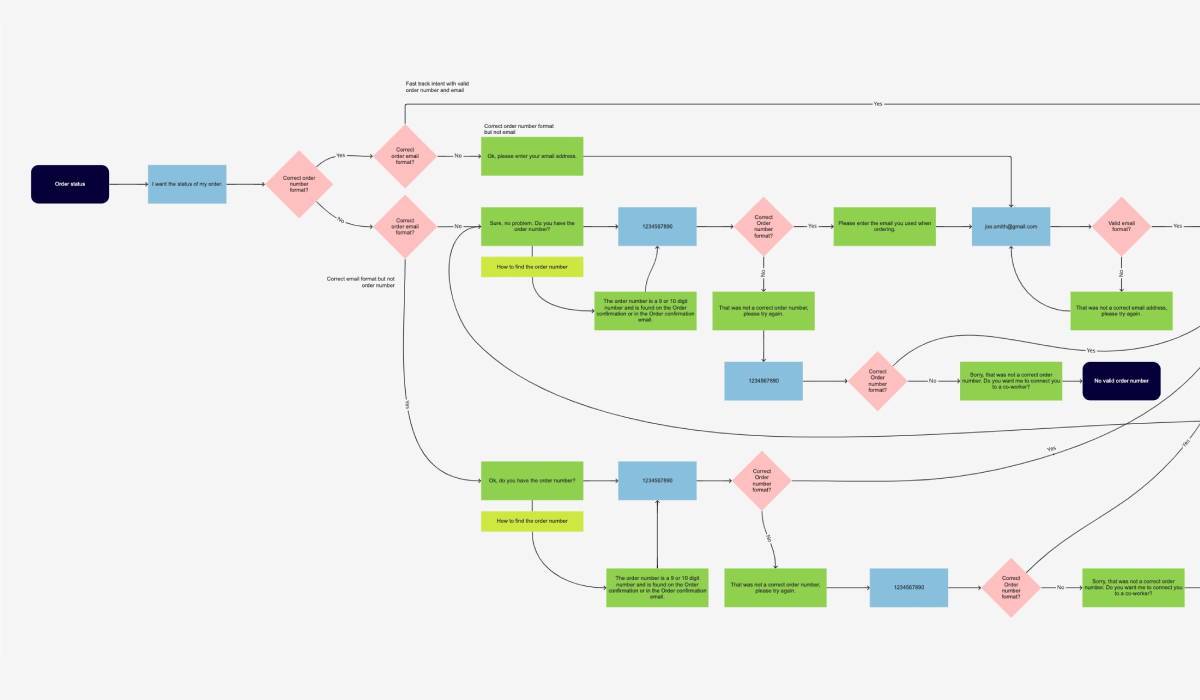IKEA Customer Service Pages
Update Customer Service Pages to better support the markets and the customers.
Photo by Rodion Kutsaiev on Unsplash
The project in short
The redesign of the Customer Service Pages in IKEA started in the winter of 2021 more as a project, but with the purpose of becoming a running business globally and in the markets.
My role in the project
In the redesign, my role as the only UX designer in the team included tasks such as:
- UX research
- Information Architecture
- Content strategy
- Prototyping
- User testing
- UI design
- Follow-up of performance
- Presenting for management, introducing stakeholders etc
Unhappy customers could not find what they were looking for

Customer Service pages had been updated in an ad-hoc way for a very very long time, which had a negative impact on both the content and the experience throughout the 32 markets. For customers, this meant pages that were hard to find, were not up to date and unhappy customers instead contacted the Customer Service Centers for support.
The process of the redesign
Incremental updates of the pages to quickly get updates to the markets
The 80+ customer service pages were in a bad state. In combination with unclear processes and missing governance, we decided that any small update to the pages, especially the business-critical ones, would be a big step forward. Once redesigned, released and implemented in the markets, we would follow up on the performance and iterate if needed.
The current state, understanding the scope and setting the scene
Research showed that on a high level, all customer service pages could be added to four buckets:
- Product information/support – all product related topics
- Services – pages with a higher e-commerce focus
- Stores – explaining all the different physical meeting points
- Other – miscellaneous pages
I realized that to understand the scope more in detail, and especially to explain the scope to stakeholders, I needed to do a global inventory of the pages and propose a structure of the existing and future pages.

In total Customer service pages are around 80 pages
Insight – A need for more than "just" redesigned pages
As expected the page inventory showed that customer service pages were in a bad shape when it came to the content.
But for a successful redesign, we also needed to clarify the global direction, the ownership of both the content and the page itself as well as the process for implementing the pages in the markets.
Insight – The structure of the customer service section
The Customer Service lobby page is the parent of all other pages in the customer service section and the page's purpose was to show both the width and the depth of the customer service section.
I made a card sorting test to see how 38 different pages would be sorted into the proposed seven main categories.
Participants' agreement spanned from 26% to 97% with the lowest on pages unique to IKEA, like IKEA Family (IKEA's loyalty club) and SMÅLAND (IKEA's playground for kids).
A better way to work with content
A supporting content brief
As part of the redesign process, I produced a content brief. The purpose was to align the team and brief the content creator, but also to better guide the markets when they would do local adaptations and translations. Essential topics in the content brief included:
- Purpose – this needed to be clear, the right content on the wrong page would still be wrong
- KPIs – bounce- and exit rate, next page in journey etc
- Content owner – who owns the content which in IKEA sometimes are not the same as the…
- Page owner – who owns the experience
- Main content – expected content on the page
Design, test and launch
Based on insights from the markets (also added to the brief) I made my own first design interpretation of what a redesigned page could look like. This really helped us in the discussions and alignment of internal stakeholders.
We knew we needed a solid business case for the redesigned pages when approaching the markets. So every page redesigned and released was tested before the launch. Either in an A/B test in a selected market, usability testing, or both.
The launch process was the easy part when we had figured out the existing market support process and the biggest challenge turned out to be how to get markets to pick up the new designs and launch them locally.
Results
As the redesign was based on insights and was tested before launch we were convinced that the redesigned pages would be an improvement to the markets.
We created Google dashboards for the markets to be able to track progress and continuous feedback rounds where I went through the released pages to be able to feedback and offer support.
Based on the follow up we could see that the redesigned pages:
- decreased exit- and bounce rate of the pages
- decreased traffic to the Contact us section
- better connected pages to the customer user journey
- contributed to IKEA´s channel shift, steering users to self-service
We see as immediate impact -61% click rate on Contact us, meaning users at this stage are less in need of CSC support, and also an exit rate 68% lower.

Returns and claims page in Belgium
Overall, the new pages are built to link to each other or other relevant pages depending on step of the journey where user might be. This can be observed by the increased traffic or relevant linked pages.

Redesign of the Returns and claims section in Belgium
Get in touch
Galveston AB
Murbruksgatan 8
216 46 Limhamn
Sweden
Phone: +46732439720
Email: johan@galveston.se
LinkedIn: @galveston
© Galveston 2023
